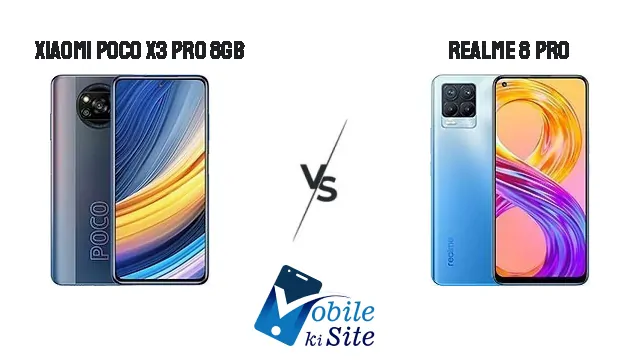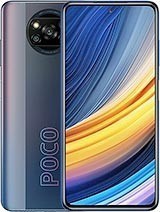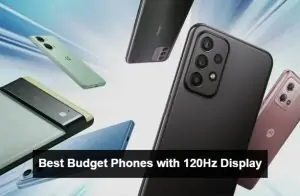Here you have one of the most demanded comparisons of 2021, the Xiaomi, Poco X3 Pro vs Realme 8 Pro. In this article, we give you their differences, our opinion, the price of both models and a comparison of their main components such as the camera, the screen and processor. Finally, we get wet and tell you which is better to buy if the Poco X3 Pro or the Realme 8 Pro.
Xiaomi Poco X3 Pro
Rs.49999
Poco X3 Pro vs Realme 8 Pro price and differences
Advantages of Poco X3 Pro
- The Poco X3 Pro has an infrared sensor, while the Realme 8 Pro does not. This is ideal for using the mobile as a remote control for any device, such as the TV, heating or air conditioning.
- The Poco X3 Pro has dual stereo speakers, while the Realme 8 Pro only makes do with a mono speaker.
- The Poco X3 Pro is IP53 certified, making it waterproof.
- The Poco X3 Pro has a screen refresh rate of 120hz, while the Realme 8 Pro only has it at 60hz; here is a significant difference, on a day-to-day basis, the Poco X3 Pro is undoubtedly more fluid.
- The Poco X3 Pro has a high-end Snapdragon 860 processor, while the Realme 8 Pro has a mid-range Snapdragon 720 processor, so in terms of power on paper, the Poco X3 Pro is far superior.
- The Poco X3 Pro has FM radio, while the Realme 8 Pro does not.
- The Poco X3 Pro has a 5,160 mAh battery for only 4,500 mAh of the Realme 8 Pro. The refresh rate at 60hz contributes to this, which is lower and spends little. Even so, the Realme 8 Pro has good autonomy and lasts two days quietly.
- The Poco X3 Pro stabilizes the video when recording at 4k and 30fps; however, the Realme 8 Pro records at this resolution but is not capable of image stabilization.
- The Poco X3 Pro is worth €259 with 256GB of memory, while the 128GB Poco X3 Pro goes up to €249. Therefore, you get double the memory in the Poco X3 Pro at the same price.
Realme 8 Pro
Rs.47999
Advantages of Realme 8 Pro
- The Realme 8 Pro is lighter and smaller. The Poco X3 Pro is huge and weighs 217 grams, while the Realme 8 Pro weighs 176 grams.
- The Realme 8 Pro has the fingerprint sensor on the screen, while the Poco X3 Pro has it on the side, although in this case, the cat overboard goes to the Poco X3 Pro because it has a faster and more efficient fingerprint sensor.
- The Realme 8 Pro has an AMOLED screen, while the Poco X3 Pro has an IPS panel; therefore, the Realme 8 Pro wins by a landslide since it has a screen with better colours and sharpness.
- The Realme 8 Pro has fast-charged at 50w and Poco X3 for only a 33w fast charge.
- The Realme 8 Pro has better cameras. The main sensor of 108 mp exceeds the 48 mp of the Poco X3 Pro, also in the wide-angle sensor and the front camera are better in the Realme 8 Pro. The zoom achieved with the Realme 8 Pro is also superior. It is worth betting on the Realme 8 Pro if you like photography.
- The Realme 8 Pro is the best when recording at 1080p and 60 fps. In this case, it is the one that stabilizes the best of the 2. At a quality level, it is superior, as long as we do not record at 4K.
Same things in the Poco X3 Pro and the Realme 8 Pro:
- They have a headphone jack.
- It has USB type c.
- Screen with the perforated camera.
- FullHD+ resolution
- They have NFC.
- Android 12.
- They have 4G connection.
Poco X3 Pro vs Realme 8 Pro review
In my opinion, the mobile offers the best power for the price it is worth. If you want pure power, you should buy the Poco X3 Pro. Keep in mind that for 200 euros, you get a high-end processor. Therefore it is a very suitable mobile for people who use a lot of mobiles to play.
If you want a more balanced mobile, the Realme 8 Pro should be your choice. It does not have as much power as the Realme 8 Pro. However, it does have a better screen, a better design (it is smaller and lighter) and a better camera, it is superior in these aspects, if for you the raw power is not so important, then I would choose this mobile.
As for the battery, they are very even, although they have different capacities. The charging times do not differ too much, so this section is not important when deciding on one mobile. In the end, the autonomy is very similar.
You may also like to read:





